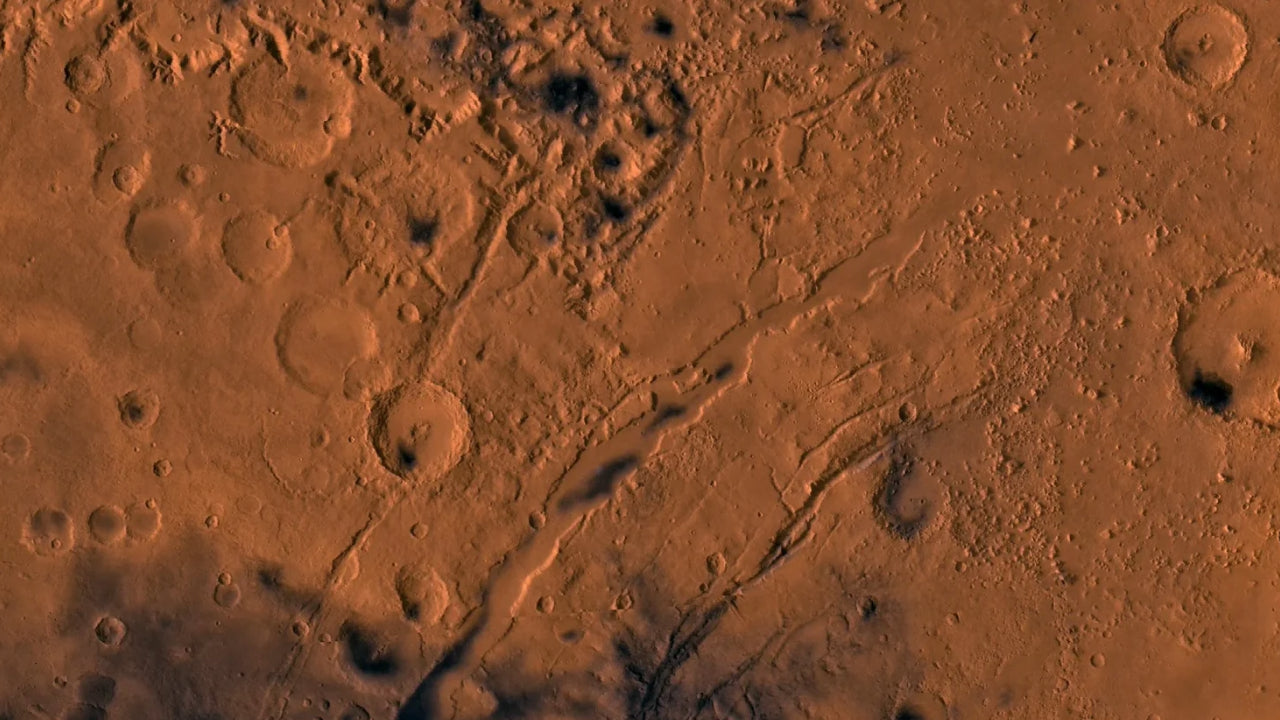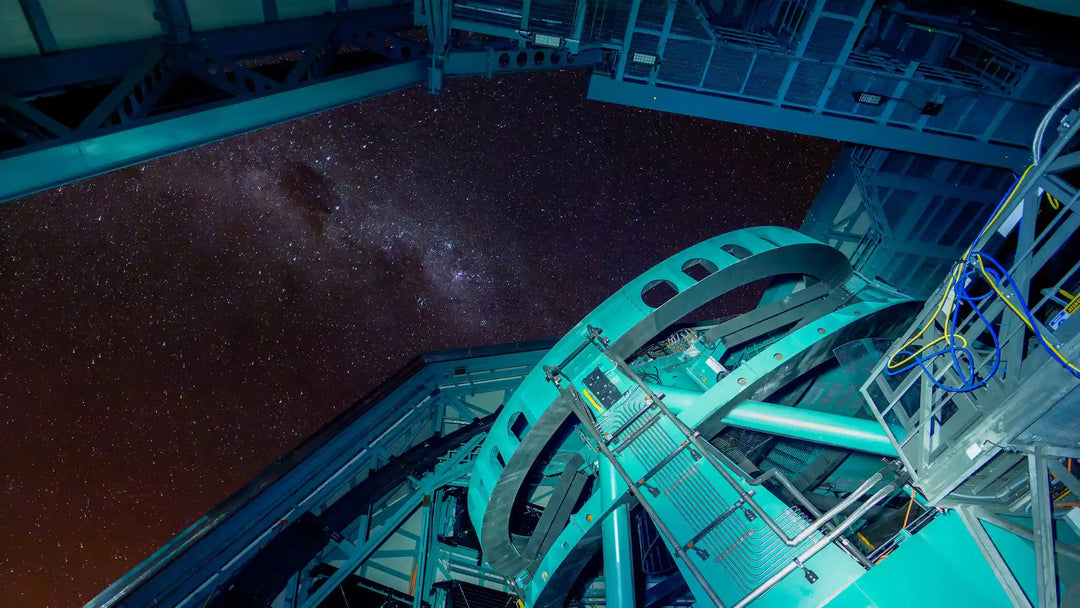Nili Fossae: Explore the Legendary Scars of Mars

Mars, the Red Planet, holds many mysteries etched into its rugged surface. Among the numerous fascinating features are the cat scratches of Nili Fossae. In today’s video release from Mars Express’s High Resolution Stereo Camera (HRSC), we delve deep into these stunning formations and unravel their secrets. Let’s embark on this cosmic journey to explore the parallel trenches of Nili Fossae and understand the history they reveal about Mars.
What are the Main Features on Mars’s Surface?
The Diverse Landscape
Mars’s surface is a tapestry of various remarkable geological formations:
- Tantalus Fossae : Fingernail-like scratches
- Valles Marineris : A colossal canyon system
- Angustus Labyrinthus : Oddly orderly ridges
- Nili Fossae : Captivating cat scratches
Nili Fossae: An Overview
What is Nili Fossae?
Nili Fossae is a complex system of parallel trenches (graben) situated along the eastern edge of Isidis Planitia, a massive impact crater on Mars. These trenches extend hundreds of meters deep and several hundred kilometers long, creating a fractured and uneven terrain.
Formation and Structure
The trenches of Nili Fossae were formed when the ground between two parallel faults fractured and subsided. This process, known as graben formation, likely occurred as Mars's crust settled following the impact that created Isidis Planitia. Similar formations, known as Amenthes Fossae, are located on the opposite side of the crater.
Check also:
- The Pale Blue Dot Photo: History, Significance, and Legacy
- Pale Blue Dot Image: What About Large Format Prints like Fine Art?
- The Earthrise Photo: A Journey Through Earth’s Iconic Space Portrait
- William Bill Anders Tribute: Astronaut, Earthrise Photographer, Aviator
- JADES-GS-z14-0: NASA's JWST Discovering the Most Distant Galaxy
AT2018fyk: the star survives a close encounter with a black hole only to meet it again
First known binary system composed of two Y-type brown dwarfs
Magellan shows volcanic activity on Venus – VERITAS mission to investigate
The Significance of Nili Fossae
Mineral Diversity
Nili Fossae is a treasure trove of diverse minerals, such as silicates, carbonates, and clays. These minerals formed in the presence of water, indicating that the region was very wet in ancient Martian history. This area, with terrain over 3.5 billion years old, suggests that surface and underground hydrothermal flows were once common here.
Historical Importance
Due to its rich mineral deposits and the potential for revealing Mars’s water-rich past, Nili Fossae was once a candidate landing site for NASA’s Curiosity rover. Although Curiosity was ultimately sent to Gale Crater, another mission, NASA’s Perseverance rover, was later sent to the nearby Jezero Crater.
You can explore this crater further via ESA’s interactive map.
Read more:
James Webb Space Telescope uncovers young stars in NGC 346’s dusty ribbons
Enceladus holds potential for alien life with recent discovery of vital element
Anticipating the celestial show – Betelgeuse's potential supernova event
Supernova 2020eyj: First radio signal from the massive explosion of a dying white dwarf
Hubble Telescope Captures a Stellar Trio: The Dawn of a Sun-like Star
Mars Express Mission and Nili Fossae
Mars Express and HRSC
Since 2003, Mars Express has been orbiting Mars, capturing high-resolution images, mapping minerals, studying the atmosphere, and probing beneath the crust. In 2014, it imaged the graben system of Nili Fossae, providing valuable insights into this feature.
New Video Release
The latest ESA video offers a north-to-south flyover of Nili Fossae, showcasing the fractured trenches and ending with a bird’s-eye view of Jezero Crater, where NASA's Perseverance rover is exploring.
IMPORTANT PROCESSING NOTES:
The video is centered at 23°N, 78°E and was created using Mars Chart (HMC30) data, which includes an image mosaic from single-orbit observations by Mars Express’s High Resolution Stereo Camera (HRSC). This mosaic is enhanced with topography from a digital terrain model of Mars to render a three-dimensional landscape.
For each second of the video, 50 individual frames are meticulously rendered along a pre-defined camera path. To enhance the visual experience, the vertical dimensions are exaggerated threefold. Additionally, atmospheric effects, such as clouds and haze, are introduced and start to appear at a distance of 50 kilometers.
Summary and Key Takeaways
Mars’s surface features tell a story of its dynamic past, prominently highlighted by formations such as Nili Fossae.
Here are the essential points:
Nili Fossae : Parallel trenches known as graben, formed through crustal settling.
Mineral Rich : Presence of silicates, carbonates, and clays indicating ancient water activity.
Historical Significance : A former candidate for Curiosity rover landing, near the current Perseverance rover site.
Mars Express Contribution : Ongoing exploration and imaging since 2003.
By exploring Nili Fossae, we continue to unravel the mysteries of Mars’s ancient past and its dynamic geological processes.
#StayCurious, Space Lovers!
FAQs About Nili Fossae on Mars
What are the notable features on Mars’s surface?
Mars hosts features like Tantalus Fossae, Valles Marineris, Angustus Labyrinthus, and Nili Fossae.
How were the trenches of Nili Fossae formed?
The trenches are graben, formations created by the fracturing and subsidence of land between parallel faults.
Has any rover explored Nili Fossae?
No rover has directly explored Nili Fossae. Although Nili Fossae was considered a potential landing site for NASA’s Curiosity rover, the rover ultimately landed in Gale Crater in 2012. Another rover, NASA's Perseverance, was later sent to explore the nearby Jezero Crater. However, Nili Fossae remains of significant interest to scientists due to its rich mineral diversity and the clues it provides about Mars’s ancient, water-rich past.
How large is Nili Fossae?
Nili Fossae comprises a system of parallel trenches that stretch out along the eastern edge of the massive impact crater Isidis Planitia. These trenches are hundreds of meters deep and extend for several hundred kilometers, making Nili Fossae one of the prominent geological features on Mars.
Why is Nili Fossae significant for Mars research?
It contains diverse minerals formed in water, offering clues about Mars’s ancient wet environment.
What minerals are found in Nili Fossae?
Silicates, carbonates, and clays, indicating past water presence.
How old is the terrain of Nili Fossae?
The terrain is over 3.5 billion years old.
What does Mars Express do?
It images Mars’s surface, maps minerals, studies the atmosphere, and probes beneath the crust.
How does the new video from Mars Express contribute to understanding Nili Fossae?
It provides detailed visuals of the trenches and Jezero Crater, enhancing our understanding of Martian geology.
Resources
- ESA, An interactive map to explore Jezero crater, [30.05.2024]
- ESA, Fly across Nili Fossae with Mars Express, [30.05.2024]
- ESA, Mysteries in Nili Fossae, [30.05.2024]
- ESA, The Topography of Nili Fossae, [30.05.2024]
- NASA, Nili Fossae - 2020 Landing Site for Mars Rover Mission, [30.05.2024]


![Vera C. Rubin Observatory: Revolutionizing Astronomy Through the World's Most Advanced Telescope [All You Need To Know]](http://astrography.com/cdn/shop/articles/vera-c.-rubin-observatory_main.webp?v=1751627507&width=1080)

Leave a comment